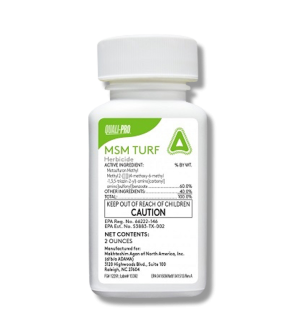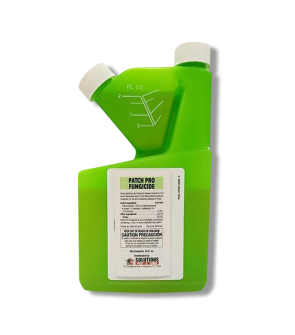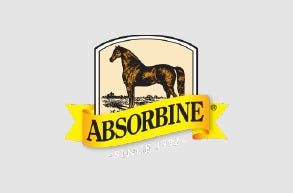Gain access to personalized product screening, the best pricing, rewards, and more!
How to Properly Water the Lawn
Most Effective Products
How to Properly Water the Lawn
This page is a general watering your lawn guide. Using the methods or tips suggested, you can have a greener and lush lawn. The how to water your lawn guide gives you additional information about lawn care, from when is the best time to water, and tips to watering different lawn types. Follow this guide and use the recommended methods or products and we guarantee 100% improvement of the appearance of your lawn.
Lawns, like people, depend on water for life. Without water, the grass in your lawn will wither, become hard and crunchy, turn brown, and die. You can avoid this by maintaining a proper irrigation schedule. This will vary depending on the location, time of year, and the type of soil within your area.
It is best to begin deeply watering your turf during the cool, early morning hours and late evenings. You want to water during these times, because throughout the day the sun will evaporate the water.
If you water in the late afternoons, stop watering before dark to allow the grass to dry in time. It is not recommended to water at night due to the grass being unable to soak in the moisture. Thus, this allows for fungi and diseases to enter the turf.
What is Watering Deeply?

Deep watering is when the soil and roots beneath your turf, tree, and shrubs are saturated at least several inches below the surface. Lawns require more water than other types of turf due to a larger coverage of area and more susceptible to stresses like heat or foot traffic.
A common misconception of deeply watering is the method of leaving your sprinkler on in your yard.
Leaving a sprinkler on is asking for trouble. They cannot accurately measure the amount of water given to plants or may not disperse properly. There are types of foliage in your turf that may possibly become over watered or not given enough water due to the foliage proximity to the sprinkler.
Sprinklers are meant to saturate your lawns whereas deeply watering is the direct application to the turf roots until the soil is completely moist under the surface. This is why deeply watering your lawns and plants roots are recommended.
For best results, do not exceed more than 1 1/2 inches of water per week and apply once to twice a week.
Conditions for Watering Your Lawn

The best time to water your lawn is in the early morning. Cooler temperatures and less exposure to the heat of the day helps keep evaporation to a minimum.
It may come as a surprise that sometimes what leads to the death of your lawn is over-watering. The key to watering is watering deeply and timing.
On average, you will want to water your lawn one to two times a week when it is actively growing. Dry soil and withered grass is an indicator that your lawn needs more water. Generally, you do not want to apply more than 1 1/2 inches of irrigation.
Over watering your lawn can lead to fungi and weed growth. If you are noticing these issues, then we recommend Patch Pro for fungi and MSM Turf Herbicide for weed growth. Both products have a broad label that will target a wide variety of broadleaf weeds and fungi diseases.
Depending on the disease to be treated, mix Patch Pro at a rate between 0.5 to 4.0 oz. per 1,000 sq. ft. We recommend using a 20-gallon hose end sprayer since this can be used to easily cover large areas of turf and output large amounts of water. For present weeds, it is best to use a post-emergent herbicide such as MSM Turf at 0.025 to 0.05 oz. of product per 1 gallon of water.
If you cannot tell if your soil is moist, stick your finger or a screwdriver into the dirt. If it does not easily go in then the soil could be dehydrated. You will know the soil is hydrated when you feel the moisture and can easily penetrate the dirt. Maybe sticking objects into the dirt is not your forte. Walking on your lawn is a good indicator to tell the turf's moisture. If grass blades easily return to their previous form, then you do not need to water.
Watering Different Lawn Types

How long to water your lawn depends on the type of turf you have, location, and time of year. Be sure to understand the different water requirements for all grasses within your turf. Time of year is a big factor when watering due to the plants age during these time periods.
For example, in spring you will have new and sprouting turf grasses that require more water for establishing its roots. Whereas with mature plants, within summer to early fall, will require less watering to at least once a week.
Timing in different locations of the United States will depend on whether you are treating cool-season grasses or warm-seasoned grasses. Regions with cold-seasoned grasses requires watering to be made one to two times a week in the early to late fall (September to December). Warm-seasoned grasses require watering at least once or twice a week from March to late July.
Choosing A Sprinkler For Your Lawn
The best and consistent way to water your lawn is with a type of sprinkler system. Most standard sprinkler models fall within six categories. Selecting the best one to properly water your lawn will depend on the size and shape of your lawn.
Fixed, or Stationary Sprinklers: Have multiple designs, but each type will still connect to your hose. It will spray the same pattern of water within its area repeatedly until moved. These types of sprinklers are ideal for small areas such as landscaping or flower beds.
Oscillating Sprinklers: Features a long tube with numerous openings to disperse water in a circular motion. Oscillating sprinklers have a metal arm that moves back and forth to ensure the entire area is saturated. This type of sprinkler is most commonly used, because of how simple it is to move to a different location.
Impact or Rotating Sprinklers: Sometimes known as pulsating sprinklers, are a type of rotor head sprinkler system. It is another type of sprinkler that is ideal to treat large scale areas for it releases water in multiple directions. The sprinkler sprays water in a complete circular motion from a single jet, creating a clicking sound as it moves. The sprinklers spray pattern can be easily adjusted without complications such as clogging, lower water pressure, and flow rate.
In-Ground Sprinkler Systems: There is some installation required at the beginning as you install your sprinkler head into your turf. You will also need to connect the sprinkler to your main water line to disperse water. Benefits of using this type of sprinkler system is it will rise from your lawn in the same place on a set timer. It is best used for the front and back of your residential or commercial lawn.
Treatment
Before starting any treatment, be sure to wear your personal protective equipment (PPE).
It is recommended to begin a water treatment schedule at the beginning of spring since plants and grass are young, and actively growing at this stage.
Step 1: Measure Rainfall or Irrigation
A rain guage is a great tool to manage the levels of water in your yard.
A rain gauge is a measuring instrument that collects water falling in it and records the change of rainfall depth over time. For accurate measurements, make sure to leave it in the open where it can easily accumulate water from rain or sprinklers.
By monitoring rainfall and irrigation you can have a better idea of how much water to apply to your yard.
Typically, you will want 1 to 2 inches of water per week for your lawn and garden. Make sure to check your local and state guidelines, as water application rates may be restricted depending on your location.
Step 2: Keep Your Plants and Grass Watered with a Sprinkler System or Hose
Depending on the size and shape of your yard, turf species, soil, and climate generally you will want to apply at least an inch of water per week for between 20 to 30 minutes per application.
Deeply water your plants roots with a water hose or sprinkler system, walk a straight horizontal line beginning from the corner of the yard to the next, until you have reached the front yard. This will ensure an even application for either device used.
Keep in mind with sprinklers, depending on the rate of application and reach you will vary in how far you will have to move it. Sprinkler systems should not be spaced more than 1 foot greater than the width of the planter. Example, you have a planter that is 8 feet weed, you will install half circle heads on both sides of the planter, no more than 9 feet apart from one another.
Key Takeaways
What is Deeply Watering?
- Deeply watering is a method used to saturate beneath the soil and near the turfs roots.
When to Water Your Lawn
- Watering your turf is best when the soil is dry or when your lawn is actively growing.
What is the Best Way to Water Your Lawn?
- Watering by hand with a watering can is the best way to measure and disperse water along your turf, underneath and directly on the foliage roots.
How To Water Your Lawn?
- To water your turf you will use a type of hose, or sprinkler to disperse water on your property. For every day application, it best to use a type of sprinkler system that will release an inch of water per week. It is recommended to have an adjustable sprinkler system depending on the type of turf you have and if you live in a area with consistent drought.

























































































































































































































































































































































































































































































































































